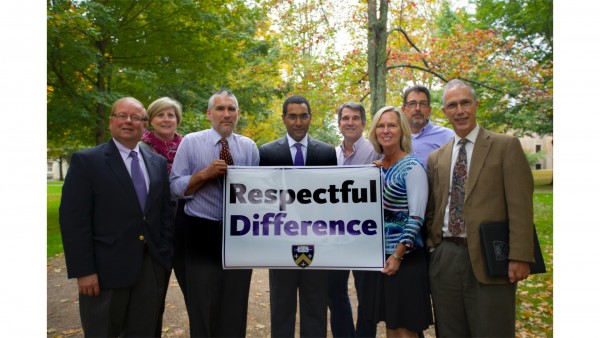Let’s Take Back More Than Just the Night

The phrase “Take Back the Night” has a history that dates back at least 40 years. In the early 1970s, groups of women gathered in cities to protest sexual violence around the world. The symbolism of the events was extremely powerful. At a time when the social norms dictated that women should not walk alone after dark, the image of women asserting their right to travel freely without being subject to violence — coming together in large rallies to reject both the hidden violence and the social tolerance of this violence — brought attention to this issue and empowered many women to take action in their local communities.
As headlines remind us, we are still in an era in which violence against women (from domestic violence to rape) occurs, and we are still at a time when this violence may be minimized, hidden away, or just plain ignored. Take Back the Night (TBTN) week here at Kenyon is an opportunity for all of us to put these issues front and center, give support to survivors, and commit ourselves to positive action.
In this context, I am particularly disturbed by the attacks on the Crozier Center for Women on campus in the days leading up to TBTN week. From the anonymous comments on social media to the vandalism and theft at the Crozier Center, the actions of a few community members have run counter to the values of Kenyon. This is behavior that we should all find unacceptable.
Protest for cultural change takes courage, often beginning with the initial act of taking a public stand on an issue. TBTN always has drawn upon this tradition. The courage embodied by those who take a public stance of protest stands in contrast to acts of bullying and terror, perpetrated typically by those who hide behind anonymity or disguise. This was true, for example, during the decades-long Freedom Movement for African Americans in the United States: Protestors, black and white, lent their voices and physical presence to press for social change, while those who aimed to frighten and intimidate often hid behind masks and under hoods. Too often, those on the sidelines fail to support the acts of courage and also give cover to the bullies, through silence, through excuses (“They’re only joking”), and through transference of responsibility (“They’re only expressing a different viewpoint”).
Academic institutions must, as a part of their core mission, create spaces for dialogue and conflicting views. Debate and dissent are essential nutrients for any college, and at Kenyon, I believe we need both of these to thrive. But our embrace of academic freedom as a principle means that we must reject bullying and intimidation that squelch debate and dissent and inhibit learning. Difference, dissent, and debate must occur in an open, respectful environment. Targeting and bullying individuals or groups restricts academic freedom.
We are part of the problem when we remain silent in the presence of unacceptable behavior; when we come to make excuses or ignore bullying; when we say, “It’s only on social media;” or when we question why some fail to find humor in statements that celebrate sexual violence. If we accept this behavior, we are failing to defend and expand the academic freedom that everyone here on campus deserves.
Kenyon is not alone in this; bullying via social media is exploding around the country and has galvanized powerful responses on other campuses. We can choose to reject hurtful behavior, and I ask all of you to contribute to this effort. A group of students has started a project on Facebook, #respectfuldifference, to allow all of us to stand up for tolerance and respect. I hope that you will join me and other members of the Kenyon community in this effort.
